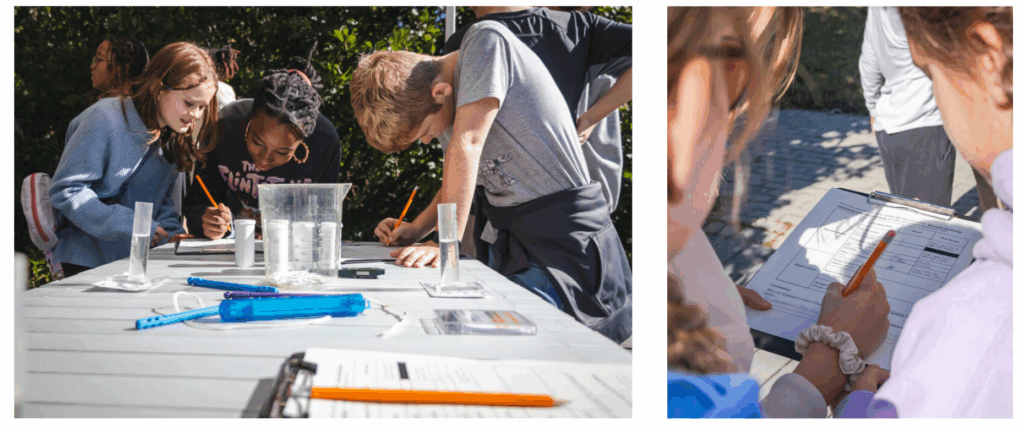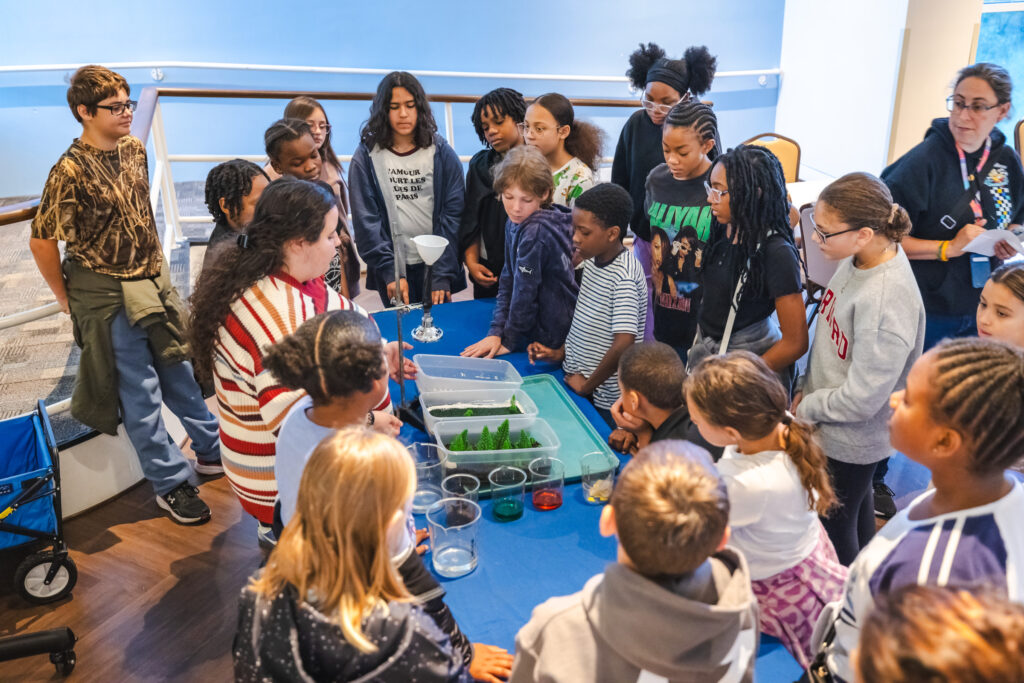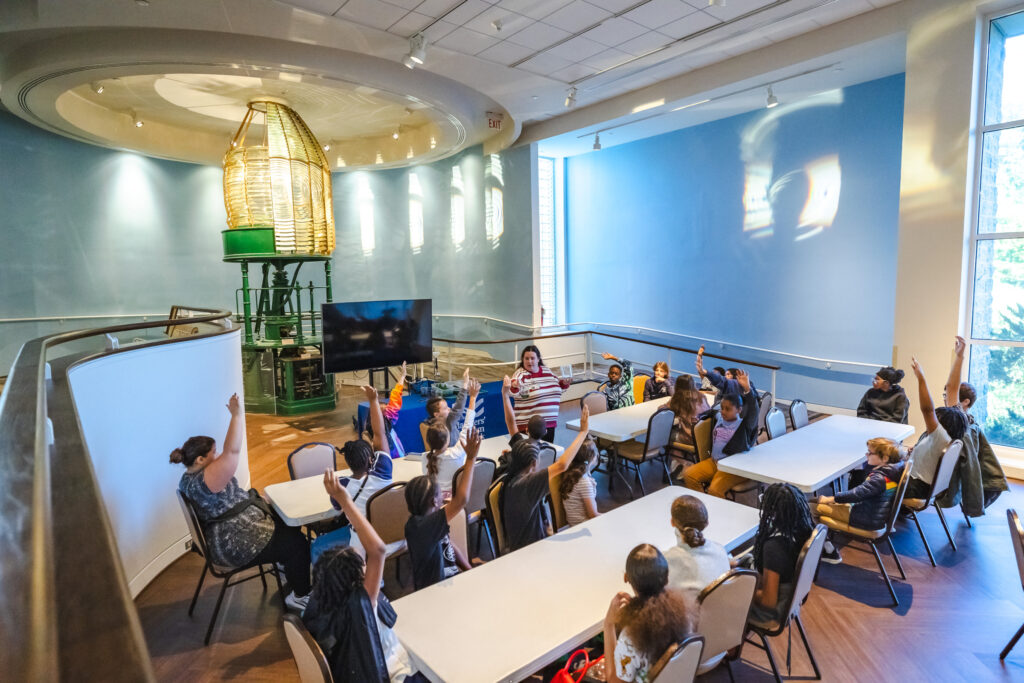Buggin’ Out in the Bay is one of The Mariners’ most engaging educational experiences. Designed to align with Virginia’s Standards of Learning (SOLs), this interactive program helps students connect with key science concepts in a memorable and meaningful way. Through a mix of outdoor activities and indoor demonstrations, students discover the importance of watershed health, gain valuable scientific investigation skills, and leave feeling confident that they can be part of the solution.

Perfect for students in grades 6–10, this program blends place-based learning and environmental conservation into one unforgettable experience.
The program begins outside, where students rotate through hands-on investigation stations to assess Mariners’ Lake’s overall health. One group investigates biotic factors — specifically, the presence of benthic macroinvertebrates, tiny critters that act as indicators of water quality.
Students are given containers of fresh Lake water filled with leaf packs where these species may be hiding. With tools and keen eyes, they sift through the debris to find snails, leeches, even the occasional baby dragonfly, and more. After identifying the species, students determine whether they are pollution-tolerant, moderately tolerant, or intolerant. Based on what they find and how many there are, the students are able to draw real scientific conclusions about the health of the Lake.

Every student group finds a few bugs to examine, and their excitement is contagious. You can hear shouts of “Look what I found!” echoing outside.

At another station, students measure the abiotic factors of the Lake: turbidity (how cloudy the water is), nutrient levels, pH, and temperature. They run tests, record data, and compare their results to what’s considered ideal for a healthy lake. Through this, they learn how abiotic factors affect the species living in the Lake and how changes in water quality can throw the entire ecosystem off balance.
Once the outdoor stations are complete, students head inside the Museum for the second part of the program. First up is a guided tour through the galleries, where an educator walks them through the history of Mariners’ Lake. They learn how the landscape has changed over time and how the Lake remains a vital part of the James River watershed today.
Next, students participate in interactive demonstrations exploring runoff and pollution. One activity involves simulating rainfall on different surfaces — concrete, manicured lawns, and forest — to observe which surfaces absorb water (permeable) and which do not (nonpermeable). Students then connect this runoff to real-world pollution, discussing how contaminants like oil, fertilizers, and litter can be carried into waterways.

In the final demo, various pollutants (represented with colorful food dyes) are added to a model water system. As each pollutant enters the “lake,” the water becomes cloudier and murkier. Students brainstorm ways to reduce or remove these pollutants from our environment, sparking some incredibly thoughtful and innovative ideas.

By the end of the day, students are excited about what they’ve learned. I had the chance to follow along with this program over the summer and saw firsthand how engaged the students were — eager to share their ideas, ask questions, and participate in every activity. I watched educators inspire curiosity, challenge students to think critically, and connect classroom content to the world around them.
More than one student said how much they enjoyed the program and how much they learned. And honestly? I learned a few new things, too.
Are you an educator with students ready to bug out with us? Learn more or book your field trip today at https://www.marinersmuseum.org/program/buggin-out-in-the-bay/